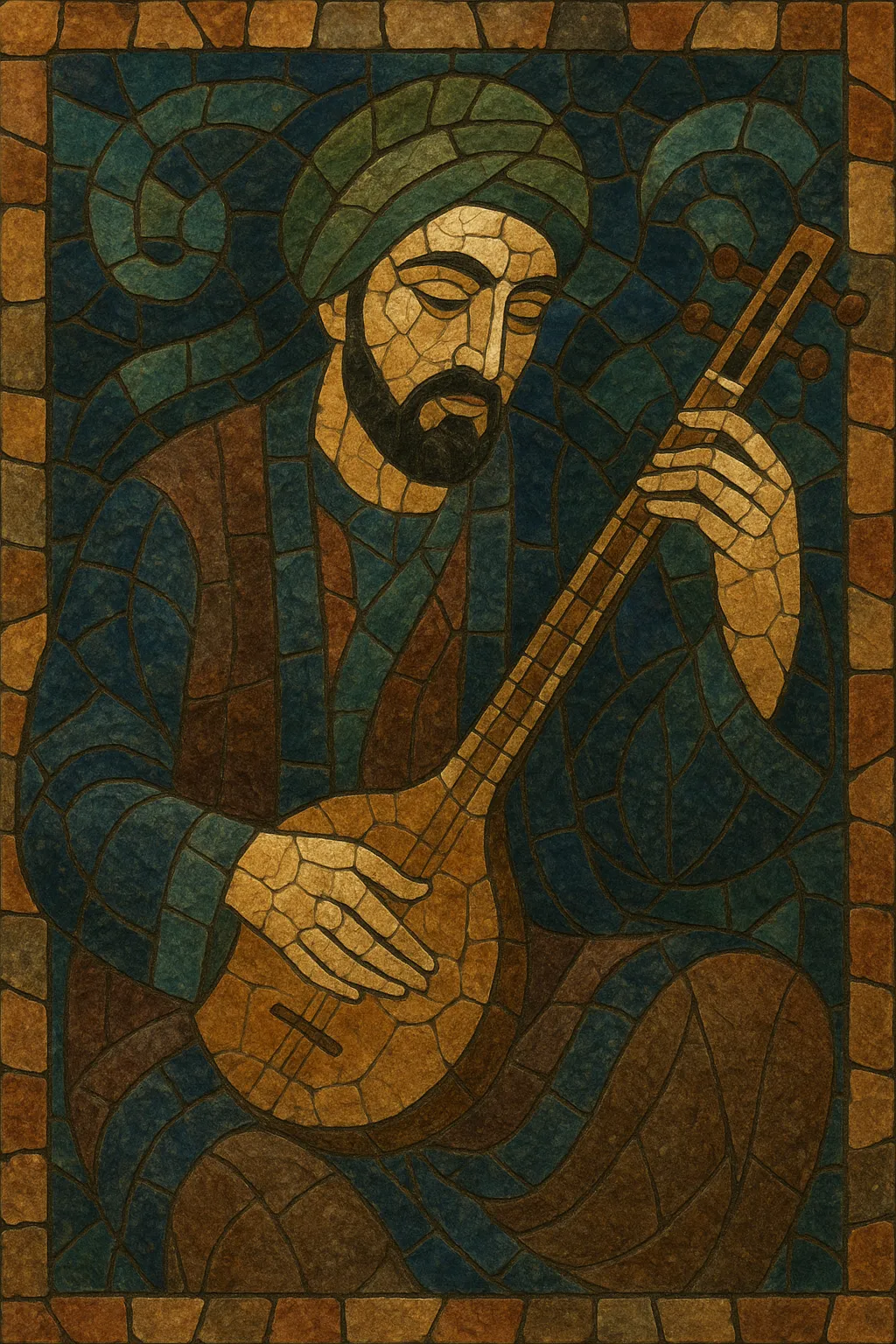Shoor (Dastgāh‑e Shur) is one of the principal modal systems of Persian classical music. It serves as a foundational mode whose melodic DNA underpins several important āvāz branches such as AbuʿAtā, Afshāri, Dashti, and Bayāt‑e Tork.
Its character is intimate, reflective, and often plaintive. Performances typically unfold through a sequence of gūshehs (short, canonical melodic pieces) that establish the mode (daramad), explore contrasting areas, and return through cadential forūd patterns. The scale employs Persian microtonal inflections (e.g., koron/ sori alterations), producing a timbre and affect that differs markedly from Western major/minor tonality.
Shoor is realized through vocally improvised āvāz and instrumental improvisation, accompanied or unaccompanied, on instruments such as tar, setar, kamancheh, santur, and ney, usually supported by tombak when meter is present. Poetry by Hafez, Saʿdi, and Rumi is frequently used, with vocal ornamentation (tahrir) shaping its expressive contour.
Shoor’s roots lie in the long evolution of Persian modal practice, but it was codified as part of the modern radif (canonical repertoire) during the Qajar period in the late 19th century. The work of master musicians such as Agha Ali Akbar Farahani and his sons (notably Mirza Abdollah and Agha Hossein-Qoli) organized existing melodic practices into systematic dastgāhs and gūshehs, with Shur placed at the center of the system.
By the late 1800s and early 1900s, the Mirza Abdollah radif firmly established Shur’s internal logic: a daramad (opening) to define the modal space, development through selected gūshehs (e.g., Salmak, Kereshmeh, Khosravāni), and forūd formulas that reaffirm the tonic. Crucially, Shur functions as a “mother mode,” spawning the closely related āvāz families AbuʿAtā, Afshāri, Dashti, and Bayāt‑e Tork, which share core pitch materials but have distinct affects and pathways.
In the 20th century, recorded media and radio disseminated Shur widely. Vocalists such as Gholām‑Hossein Banan and later Mohammad‑Reza Shajarian shaped public understanding of Shur’s expressive range, while virtuosi including Jalil Shahnaz, Mohammad‑Reza Lotfi, Hossein Alizadeh, Dariush Talai, Parviz Meshkatian, and others advanced its instrumental language on tar, setar, santur, and kamancheh.
Today, Shur remains a cornerstone for pedagogy and performance. Conservatory training in Iran and the diaspora teaches Shur early due to its centrality and its role in unlocking the related āvāz branches. Contemporary artists preserve the radif while engaging in new collaborations and chamber formats, extending Shur’s reach into concert halls, festivals, and cross‑cultural projects.


